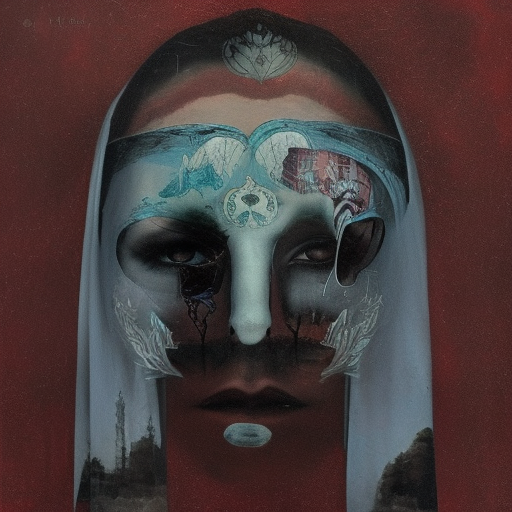The Face of Another by Hiroshi Teshigahara
One-line summary: A disfigured man seeks a new identity through a realistic mask, leading to a profound exploration of identity, perception, and societal norms.
Main Cast and Crew:
- Director: Hiroshi Teshigahara
- Writer: Kôbô Abe (novel), Kôbô Abe (screenplay)
- Key Actors: Tatsuya Nakadai (Mr. Okuyama), Mikijirô Hira (Dr. Hira), Kyôko Kishida (Mrs. Okuyama), Eiji Okada (Mr. Yoshida)
- Music Director: Toru Takemitsu
- Director of Photography: Hiroshi Segawa
- Producers: Kiichi Ichikawa, Tadashi Ôno
Plot:
The Face of Another follows Mr. Okuyama, a man who has been disfigured in an industrial accident. Feeling alienated and disconnected from society, he seeks the help of a skilled psychiatrist, Dr. Hira. Driven by his desire to regain a sense of normalcy, Mr. Okuyama embarks on an experiment to create a lifelike mask that will allow him to interact with others without being judged for his appearance.
As Mr. Okuyama dons his new face, he discovers the power of anonymity and the freedom it brings. However, his newfound confidence soon gives way to a darker side as he realizes the mask allows him to indulge in his deepest desires without consequence. With his identity concealed, he becomes entangled in a complex web of deceit, manipulation, and moral ambiguity.
The film delves into the psychological and philosophical implications of identity and perception. It questions the extent to which our physical appearance shapes our interactions with others and how our true selves are often obscured by societal expectations. Through Mr. Okuyama’s journey, the film explores themes of self-discovery, isolation, and the masks we wear to fit into society.
Themes and Motifs:
The Face of Another explores the duality of human nature and the masks we wear to navigate social situations. It examines the tension between individuality and conformity, highlighting how societal norms can suppress our true selves. The film also delves into the nature of perception, challenging the viewer to question their own biases and preconceived notions about appearance.
Reception and Legacy:
Upon its release in 1966, The Face of Another received critical acclaim for its thought-provoking exploration of identity and its innovative visual style. The film won the Special Jury Prize at the 1966 Cannes Film Festival and was nominated for the Palme d’Or. It solidified Hiroshi Teshigahara’s reputation as a master filmmaker and further established his collaboration with writer Kôbô Abe.
The Face of Another’s impact on cinema can still be felt today. Its themes and visual techniques have influenced numerous filmmakers, and its exploration of identity and societal expectations remains relevant. The film’s examination of the masks we wear to navigate the world continues to resonate with audiences, making it a timeless piece of cinema.
Recommendation:
The Face of Another is a visually stunning and intellectually stimulating film that will leave viewers contemplating the nature of identity and perception. Its thought-provoking exploration of societal norms and the masks we wear makes it a must-watch for those interested in philosophical cinema. However, it is worth noting that the film contains mature themes and may not be suitable for all audiences.
Memorable Quote:
“Even if I wear a mask, I can’t hide my voice.” – Mr. Okuyama












